Related Research Articles
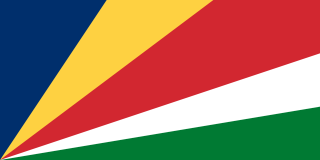
Seychelles, officially the Republic of Seychelles, is an island country and archipelagic state consisting of 155 islands in the Indian Ocean. Its capital and largest city, Victoria, is 1,500 kilometres east of mainland Africa. Nearby island countries and territories include the Comoros, Madagascar, Mauritius, and the French overseas departments of Mayotte and Réunion to the south; and the Chagos Archipelago and Maldives to the east and borders Kenya to the far east. Seychelles is the smallest country in Africa as well as the least populated sovereign African country, with an estimated population of 100,600 in 2022.

Seychelles is a small island country east of the African continent located in the Sea of Zanj due north of Madagascar, with Antsiranana as its nearest foreign city. Seychelles lies between approximately 4ºS and 10ºS and 46ºE and 54ºE. The nation is an archipelago of 155 tropical islands, some granite and some coral, the majority of which are small and uninhabited. The landmass is only 452 km2 (175 sq mi), but the islands are spread wide over an exclusive economic zone of 1,336,559 km2 (516,048 sq mi). About 90 percent of the population of 100,000 live on Mahé, 9 percent on Praslin and La Digue. Around a third of the land area is the island of Mahé and a further third the atoll of Aldabra.

Aldabra, the world's second-largest coral atoll, is located southeast of the continent of Africa. It is part of the Aldabra Group of islands in the Indian Ocean that are part of the Outer Islands of the Seychelles, with a distance of 1,120 km (700 mi) southwest of the capital, Victoria on Mahé Island. Initially named by Arab seafarers for its harsh environment, Aldabra became a French colony dependency in the 18th century, leading to the exploitation of its natural resources, particularly giant tortoises. After passing through British hands, Aldabra faced potential military use in the 1960s, but international protests resulted in its protection. The atoll boasts unique geography, featuring the world's largest raised coral reef and a large shallow lagoon. Aldabra's history involves human impact, including failed agricultural ventures.

The Aldabra giant tortoise is a species of tortoise in the family Testudinidae and genus Aldabrachelys. The species is endemic to the Seychelles, with the nominate subspecies, A. g. gigantea native to Aldabra atoll. It is one of the largest tortoises in the world. Historically, giant tortoises were found on many of the western Indian Ocean islands, as well as Madagascar, and the fossil record indicates giant tortoises once occurred on every continent and many islands with the exception of Australia and Antarctica.
Cosmoledo Atoll is an atoll of the Aldabra Group and belongs to the Outer Islands of the Seychelles, and is located 1,029 km (639 mi) southwest of the capital, Victoria, on Mahé Island.

Assumption Island is a small island in the Outer Islands of Seychelles north of Madagascar, 1,135 km (705 mi) southwest of the capital, Victoria.
This article is one of a series providing information about endemism among birds in the world's various zoogeographic zones. For an overview of this subject see Endemism in birds.
Cousin Island is a small granitic island of the Seychelles, lying 2 km (1.2 mi) west of Praslin. It is a nature reserve protected under Seychelles law as a Special Reserve. It is managed by Nature Seychelles, a national nonprofit organization and Partner of BirdLife International, by which it has been identified as an Important Bird Area.

The Seychelles parakeet or Seychelles Island parrot is an extinct species of parrot that was endemic to the Seychelles in the Indian Ocean. It was scientifically named Palaeornis wardi by the British ornithologist Edward Newton in 1867, and the specific name honours the British civil commissioner Swinburne Ward who procured the specimens that formed the basis for the description. It was found on the islands of Mahé, Silhouette, and possibly Praslin. Ten skin specimens exist today, but no skeletons. Though the species was later moved to the genus Psittacula, genetic studies have led some researchers to suggest it should belong in a reinstated Palaeornis along with the closely related Alexandrine parakeet (P. eupatria) of Asia.
Constantine Walter Benson OBE was a British ornithologist and author of over 350 publications. He is considered the last of a line of British Colonial officials that made significant contributions to ornithology.
The Aldabra brush warbler is an extinct bird in the acrocephalid warbler family. It was endemic to the atoll of Aldabra in the Seychelles and an individual was last seen in 1983.
Cousine Island is a small granitic island 30 ha in the Seychelles 6 km (4 mi) west of Praslin Island. It is a combination luxury resort and since 1992 a nature preserve.
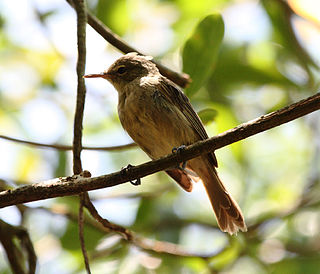
The Seychelles warbler, also known as Seychelles brush warbler, is a small songbird found on five granitic and corraline islands in the Seychelles. It is a greenish-brown bird with long legs and a long slender bill. It is primarily found in forested areas on the islands. The Seychelles warbler is a rarity in that it exhibits cooperative breeding, or alloparenting, which means that the monogamous pair is assisted by nonbreeding female helpers.
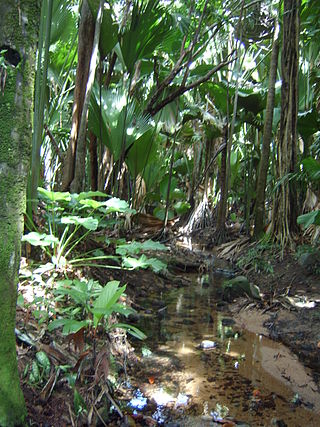
The wildlife of Seychelles comprises the flora and fauna of the Seychelles islands off the eastern coast of Africa in the western Indian Ocean.

Tourism is the most important nongovernment sector of Seychelles' economy. About 15 percent of the formal work force is directly employed in tourism, and employment in construction, banking, transportation, and other activities is closely tied to the tourist industry. Tourists enjoy the Seychelles' coral beaches and opportunities for water sports. Wildlife in the archipelago is also a major attraction.

The British Indian Ocean Territory (BIOT) is an Overseas Territory of the United Kingdom situated in the Indian Ocean, halfway between Tanzania and Indonesia. The territory comprises the seven atolls of the Chagos Archipelago with over 1,000 individual islands, many very small, amounting to a total land area of 60 square kilometres. The largest and most southerly island is Diego Garcia, 27 square kilometres, the site of a Joint Military Facility of the United Kingdom and the United States. Official administration is remote from London, though the local capital is often regarded as being on Diego Garcia.
Articles related to Seychelles include:

Rhachistia aldabrae, the Aldabra banded snail, is a species of air-breathing land snail, a pulmonate gastropod mollusc in the family Cerastidae. The species lives on one atoll in the Seychelles Islands, Indian Ocean, and is easily recognizable for its purplish-blue banded shell. The species was thought to have died out because of climate change, but was rediscovered in 2014.
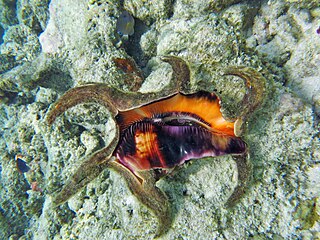
Harpago arthriticus, common name : the arthritic spider conch, is a species of sea snail, a marine gastropod mollusk in the family Strombidae, the true conchs.
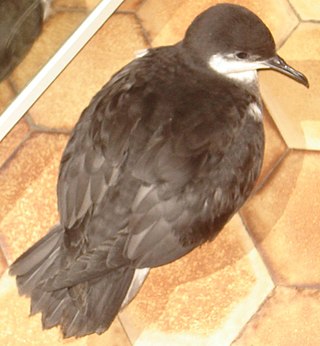
The tropical shearwater is a seabird in the family Procellariidae formerly considered conspecific with Audubon's shearwater.
References
- ↑ Sea Frontiers. Volume 18. International Oceanographic Foundation, 1972: p. 191.
- 1 2 3 23ème Festival International du Film Ornithologique 2004 (Short biographies of the Jury members) Online (in French)
- ↑ Benson, C. W. & Penny, M. J. 1968 A new species of warbler from the Aldabra Atoll. Bull. Br. orn. Club 88,. 102-108